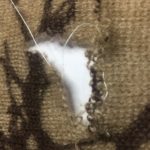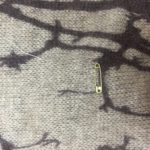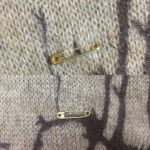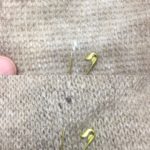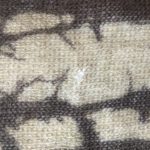As the weather warms up, it’s actually the BEST time to care for our favourite sweaters so they are clean & moth-free for the summer storage. My favourite sweater is over 25 years old (I can’t quite recall when I got it, but I know it was a gift from my parents). I wear this sweater to nearly every hockey game and hockey practice, so the sweater is well-worn! It just doesn’t need to look that way:
Any sweater with pills will snag more easily and collect dirt more easily – dirt also attracts moths…so any sweater going into ‘storage’ needs to be clean to avoid surprise moth holes in the fall. In this case, first step is de-pill the sweater! I did one side using a dull razor from my husband, it was quick, but with the amount of pilling, became far too dull before I could complete the sweater.
I purchased a small battery operated sweater shaver, which took me a total of 3 hours to completely clean off this sweater. Had the pilling not been so bad, it wouldn’t have taken as long, and its definitely better for preventative maintenance, but for something this drastic, the shaver kept snagging – yarn would spin in the middle and catch on the sweater:
![]()
You can see it sticking out on the shaver, as the shaver spun it would catch on the sweater and build up inside the shaver
I hope to try out another technique in the coming weeks as I order in some other de-pillers 🙂
But, sweater looks brand-new, and after a wash & dry, I’ll store this one in my closet with some lavender – because I still love this sweater for nights when camping plus I’ll be visiting arenas again in August.


